Key Highlights
- Monthly Living Costs in Australia for International Students
- Accommodation Costs: The Largest Expense Component
- Food and Grocery Expenses for International Students in Australia
- Transportation and Travel Expenses
- Most Affordable Cities
- Health Care and Related Insurance Costs
- Entertainment and Lifestyle Expenses
- Money-Saving Tips for International Students
- Working While Studying: Income Opportunities
- Latest Facts & News Section
- Conclusion
Monthly living expenses in australia for international students generally cost between AUD 1,200 and AUD 3,190 a month in 2025, depending on your identified city to live in, the kind of accommodation you prefer and your lifestyle. The Australian Government asks that international students prove that they can spend at least AUD 29,710 a year to receive the student visa because it is a realistic indication of how much students will need to cover the Australian living expenses. At the present rate of currency conversion (AUD to INR), now about 1 AUD = 56.68 INR (August 2025), this would work out to an estimated convergence of approximately INR 1,683,900. Monthly living expenses in australia for international students. This financial requirement is referred to as 75 per cent of the national minimum wage of Australia, as set out by the Department of Home Affairs, taking into consideration that students spend 25 per cent of the year out of course sessions.
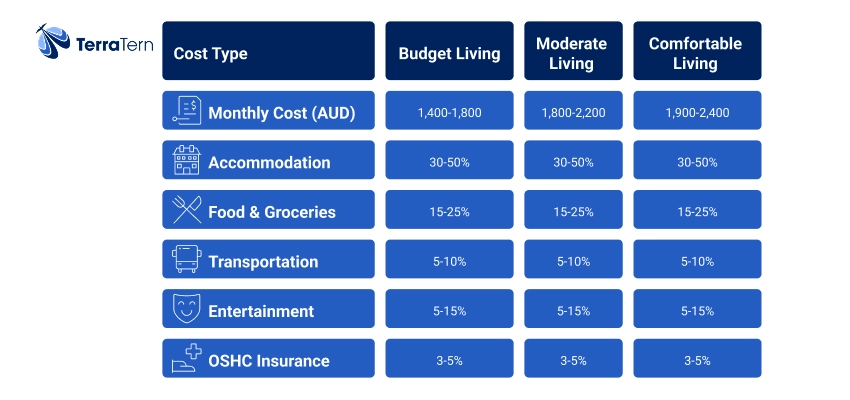
Monthly Living Costs in Australia for International Students

Monthly living expenses in australia for international students .Basic Expense by Lifestyle (A$1,400-A$2,500) monthly.
|
Category Lifestyle |
Monthly Range (AUD) |
Monthly Range (INR) |
What is Covered? |
What is Excluded |
|
Budget Living AUD |
1400-1800 |
INR 79,352-1,02,024 |
staying in a shared house, home-cooked food, bus/tram/train, electricity, water, heat, OSHC |
Attending classes, book costs, visa costs, and OSHC emergency fund |
|
Moderate Living AUD |
1,800-2,200 |
INR 1,02,024-1,24,696 |
model accommodation, eats out occasionally, some socialising and standard utilities |
Course materials, international travel, moving in costs |
|
Comfortable living AUD |
1900 – 2400 |
INR 1,08,212-1,36,600 |
Management accounting, bowling, |
Abroad CCT workshop, short trips |
Government Requirements for Financial Proof
Financial Evidence Conditions by Governments. The monthly living expenses in australia for international students updated financial capacity requirements of the Department of Home Affairs (2025)
|
Current Category |
Previous (Pre-May 2024) |
Description Current Requirement |
Increase Amount |
Percentage Increase |
|
Primary Student |
AUD 24,505 |
AUD 29,710 |
AUD 5,205 |
21.2Percent |
|
Spouse/ Partner |
8,574 |
10,394 |
1820 |
21.2 percent |
|
Dependent Child |
AUD 3,670 |
AUD 4,449 |
AUD 779 |
21.1 |
|
School Fees(Yearly) |
AUD 9,661 |
AUD 13,502 |
AUD 3,841 |
39.8% |
Also Read: Explore Part-Time Jobs in Australia for International Students
Accommodation Costs: The Largest Expense Component
Currently,monthly living expenses in australia for international students have their most significant monthly expenditure on accommodation, which constitutes 30-50 per cent of their budget. There are many choices that students can make with distinct characteristics, prices, and inclusions.
Comparison Table: Weekly and Monthly Accommodation Costs
|
Type of housing |
Per Week Price (AUD) |
Per month Price (AUD) |
Utilities provided |
Features |
Availability |
|
On-Campus |
100-275 |
440-1,100 |
Yes |
Private/Shared, furnished, secure Shared ApartmentOccasionally Own |
Limited; apply early |
|
Shared Apartment |
88-200 |
380-850 |
Sometimes |
room, shared kitchen, bathroom |
Widely available |
|
Private Rental |
175-400 |
750-1,700 |
No |
Entire Flat/Studio, unfurnished/furnished |
City Depends |
|
Homestay |
104-277 |
450-1, 200 |
Yes (the majority of cases) |
Family home, meals, utilities |
Regulated, moderate spots |
On-Campus Student Housing in Australia
|
Feature |
Details |
|
Monthly cost (AUD) |
440-1,100 |
|
What is Included |
Security, sugar and sunlight, basic furnishings |
|
Pros |
Easy living access to the campus facilities, co-living, and inclusive bills |
|
Cons |
Not many places, competitive process, in many cases, requires up to 6-12 months in advance. |
|
Availability Suggestions |
Apply early and make waitlists early |
-
Utilities: In most cases, these are included.
-
Internet: Usually present (and in some cases at an additional cost).
-
Furniture: Through and through provided.
-
Duration: One semester or one-year contract.
Off-Campus Housing Options in Australia
|
Option |
Month Cost (AUD) |
Features |
Utilities |
Notes |
|
Shared Apartment |
380-850 |
Room/common areas. |
Occasionally |
Practising among students, sharing of expenses can be attained |
|
Private Rental |
750-1700 |
Whole flat/studio |
No |
Deposits (bond) and connection fees are additional |
|
Homestay |
450-1200 |
Food and living with the family |
Yes |
Regulated agents, immersion in the culture |
-
Standard Apartments: Housemates may share their utility; in most cases, the internet is an extra expense.
-
Individual Rentals: power and internet are not included, paid individually. Furnishings may not be included.
-
Homestays: There are included meals in the price paid, and all utilities are paid.
Additional Housing Expenses in Australia
|
Cost Output |
Yearly Cost (AUD) |
Notes |
|
Utilities |
200 |
Frequently not included: Electricity, gas, water |
|
Internet- |
70-120 |
Roommates or individual plan |
|
Deposit/Bond |
Normally, 4 weeks' rent |
Refundable at the end of the lease, except where there are damages |
|
Connection Charges |
100-200 (one time) |
To connect electricity, gas and internet |
Food and Grocery Expenses for International Students in Australia
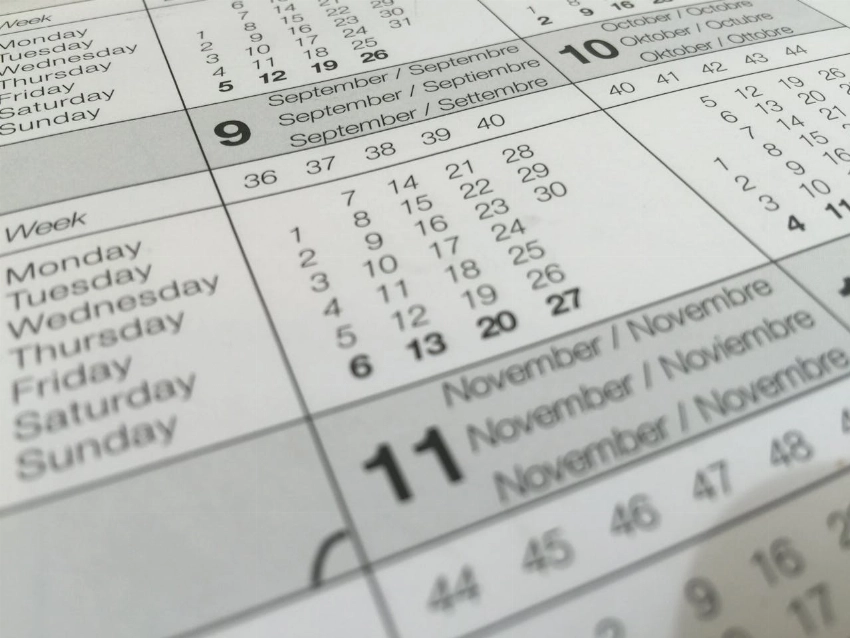
Somewhere between 15 and 25 per cent monthly living expenses in australia for international students go to food and groceries. The typical international student spends AUD 300-600/month on food and groceries, and significant savings can be achieved by adopting wise shopping and home cooking as strategies.
Weekly Grocery Budgets
The weekly grocery budgets are:
|
Budget Type |
Weekly Expense (AUD) |
Monthly Expense(AUD) |
Monthly Expense (INR) |
Shopping Strategy |
|
Ultra Budget |
AUD 60-80 |
AUD 260-345 |
INR 14,737-19,555 |
Simple commodities, shopping in bulk, and economical stores |
|
Budget Conscious |
AUD 80-120 |
AUD 345-520 |
INR 19,555-29,474 |
Variety with brands, seasonal items and planning |
|
Typical expenditure |
AUD 120-150 |
AUD 520-650 |
INR 29,474-36,842 |
Nice food, partly convenience food |
|
Affordable price range |
AUD 150-200 |
AUD 650-865 |
INR 36,842-49,029 |
High-end brands and nature, lots of options |
Dining Out Costs for International Students in Australia
The dining out costs for international students in Australia are:
|
Dining Option |
Price Range (AUD) |
Price in INR* |
Typical Examples |
Student Discounts Available |
|
Fast Food Combo |
AUD 10-15 |
INR 567-850 |
McDonald's, KFC, Subway |
Sometimes with a student ID |
|
Casual Restaurant |
AUD 15-25 |
INR 850-1,417 |
Pizza, Asian takeaway, pub meals |
10-15% discounts are common |
|
Mid-Range Restaurant |
AUD 25-40 |
INR 1,417-2,267 |
Sit-down dining, table service |
Limited student offers |
|
Fine Dining |
AUD 40-80 |
INR 2,267-4,534 |
High-end restaurants |
Rarely discounted |
|
Food Courts |
AUD 12-18 |
INR 680-1,020 |
Shopping centre meals |
Good value, large portions |
Dining out costs have increased 34% since 2019, with menu prices rising 4.3% in the past year alone.
Also Read: Australia Welcomes a Large Number of International Students
Transportation and Travel Expenses
Transportation costs are estimated to be about 5-10 per cent of the monthly expenditures of and monthly living expenses in Australia for international students vary based on the city in Australia you live in, the types of transport you use, and the frequency of use of the different transport modes. International students predominantly use the system of public transport, because of its relative cheapness and the extensive coverage of the major Australian cities.
Public Transport Monthly Passes
The public transport monthly passes in Australia are:
|
City |
Adult Monthly Pass (AUD) |
Student/Concession Monthly Pass (AUD) |
Student Savings (AUD) |
Key Features |
|
Sydney (NSW) |
AUD 160-200* |
AUD 80-100 |
AUD 80-100 |
Weekly ceiling (AUD) 50, weekend 50 |
|
Melbourne (VIC) |
AUD 132 |
AUD 66 |
AUD 66 |
According to a zone, 28-365 day passes are possible |
|
Brisbane (QLD) |
AUD 120-150 |
AUD 60-75 |
AUD 60-75 |
Go Card system, off-price reductions |
|
Perth (WA) |
AUD 100-140 |
AUD 50-70 |
AUD 50-70 |
SmartRider, free Sunday travel |
|
Adelaide (SA) |
AUD 110-130 |
AUD 55-65 |
AUD 55-65 |
Metrocard, an integrated system |
|
Canberra (ACT) |
AUD 125 |
AUD 62.50 |
AUD 62.50 |
MyWay+ system, student transport program |
Appropriate approximation based on weekly limits and daily consumption
Alternative Transportation
Cycling Infrastructure and Costs:
|
Cycling Component |
Initial Cost (AUD) |
Monthly Cost (AUD) |
Annual Cost (AUD) |
Benefits |
|
Budget Bike |
200-400 |
5-10 (maintenance) |
60-120 |
At the lowest cost option of transport |
|
Mid-Range Bike |
400-800 |
10-15 (maintenance) |
120-180 |
More solid and it has |
|
Bike Accessories |
100-200 |
2-5 (replacements) |
25-60 |
Helmet, lights, lock (mandatory helmet) |
|
Bike Maintenance |
50-100 per service |
8-15 |
100-180 |
Bicycle repair & Maintenance |
|
Total Annual Cycling |
300-1,200 |
25-45 |
305-540 |
long-term savings |
Cycling Infrastructure Investment: Australia spends just 90 cents per capita yearly on cycling infrastructure compared to 714 cents per capita on road infrastructure. Nevertheless, in large cities, cycling networks are becoming better.
City-Wise Monthly Living Expenses Comparison
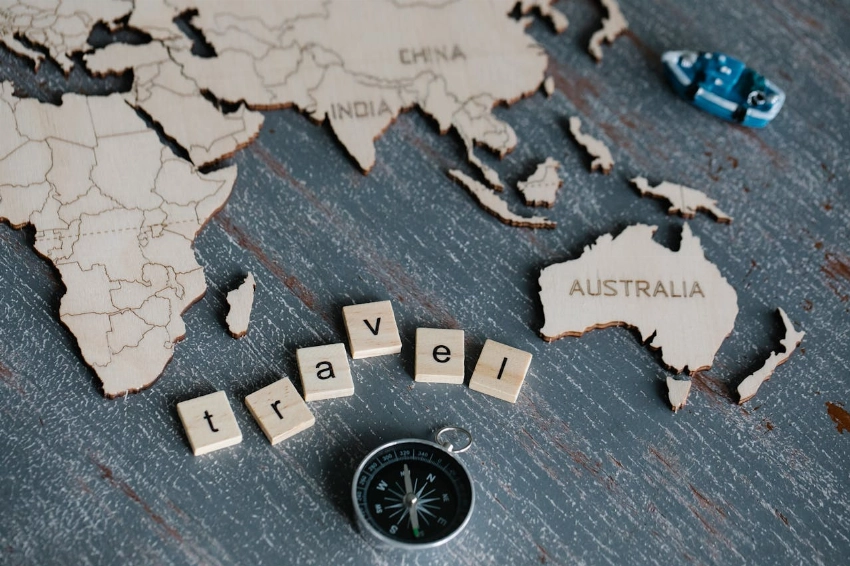
Monthly living expenses in australia for international students varies significantly across the cities, where there can be a difference of up to AUD 1,500 per month between the most expensive and the least expensive places to live in. The realisation of these differences is the essential part of international students preparing their budgets when studying abroad and selecting the most appropriate city based on their financial conditions.
Detailed table of the City comparison
|
City |
Monthly Living Cost (AUD) |
Monthly Cost (INR)* |
Accommodation (AUD) |
Transport (AUD) |
Food (AUD) |
Key Advantages |
|
Sydney |
2,500-3,850 |
1,41,700-2,18,270 |
1,500-2,500 |
160-200 |
400-600 |
Job opportunities, iconic landmarks |
|
Melbourne |
2,200-2,800 |
1,24,696-1,58,704 |
1,200-2,000 |
132-150 |
350-500 |
diversity, destination of study |
|
Brisbane |
2,100-2,800 |
1,19,028-1,58,704 |
1,100-1,800 |
120-150 |
300-450 |
Fine-grained lifestyle and technological innovation |
|
Perth |
2,000-3,000 |
1,13,360-1,70,040 |
1,200-2,200 |
100-140 |
350-500 |
Mining prospects and lack of crowds |
|
Canberra |
2,200-3,100 |
1,24,696-1,75,708 |
1,300-2,100 |
125 |
300-450 |
Government occupations, city-planned |
|
Adelaide |
1,600-2,200 |
90,688-1,24,696 |
900-1,500 |
110-130 |
280-400 |
Best value, good transport |
Most Expensive Cities in Australia for International Students
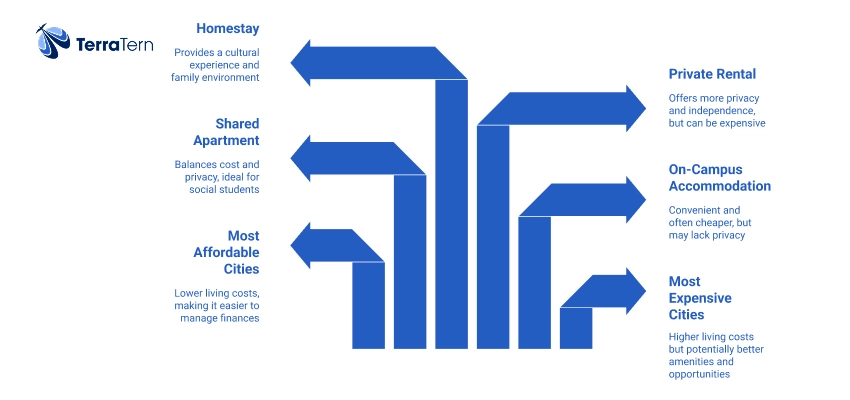
The most expensive cities in Australia for international students are:
1. Sydney: $2,500 – $3,850 /mo
Breakdown for Students' Costs:
|
Expense Category |
Budget Range (AUD) |
Premium Range (AUD) |
Budget % |
|
Accomm. |
1200-1800 |
2000-2500 |
48-65% |
|
Food & Groceries |
400- 500 |
500 - 600 |
16 - 20% |
|
Transportación |
160-200 |
160-200 |
6.8% |
|
Utilitaries |
150-200 |
200-250 |
6.8% |
|
Entertainment |
200-300 |
400-500 |
8-13 % |
|
Personal Expenses |
150-200 |
200-300 |
6-8% |
2. Melbourne
Students Cost Summary
|
Expense Category |
Monthly Range (AUD) |
Key Benefits |
|
Accommodation |
1,200-2,000 |
More economical neighbourhoods where students are clustered |
|
Food & Groceries |
350-500 |
Diverse, unparalleled selection of multicultural cuisines |
|
Transportation |
132-150 |
Comprehensive tram network with student discounts |
|
Utilities |
120-180 |
Moderate utility costs |
|
Entertainment |
200-400 |
Rich cultural scene, free events |
3. Canberra: AUD 2,200-3,100/month
Cost Breakdown for Students:
|
Expense Category |
Monthly Range (AUD) |
Unique Aspects |
|
Accommodation |
1,300-2,100 |
More economical neighbourhoods where students are clustered |
|
Food & Groceries |
300-450 |
Diverse, unparalleled selection of multicultural cuisines |
|
Transportation |
125 |
Excellent public transport integration |
|
Utilities |
150-200 |
Higher heating costs due to climate change |
|
Entertainment |
200-350 |
Quality over quantity approach |
Most Affordable Cities
Lowest Cost Cities
1. Adelaide
|
Expense Category |
Projected Monthly Spend (AUD) |
Cost Savings Against the Sydney Counterparts |
|
Accommodation |
900-1,500 |
On average, it is 40–50% cheaper |
|
Food & Groceries |
280-400 |
Up to 20–30% LOWER |
|
Transportation |
110-130 |
30% cheaper (student discounts exceptional) |
|
Utilities |
100-150 |
25% cheaper |
|
Entertainment |
150-250 |
35% cheaper |
2. Brisbane: AUD 2,100-2,800/month
Cost Breakdown for Students:
|
Expense Category |
Monthly Range (AUD) |
Value Proposition |
|
Accommodation |
1,100-1,800 |
Balanced pricing with good locations |
|
Food & Groceries |
300-450 |
Competitive grocery prices |
|
Transportation |
120-150 |
Integrated transport system |
|
Utilities |
120-180 |
Moderate costs, less heating required |
|
Entertainment |
200-350 |
Growing cultural scene |
3. Perth: AUD 2,000-3,000/month
Cost Breakdown for Students:
|
Expense Category |
Monthly Range (AUD) |
Special Considerations |
|
Accommodation |
1,200-2,200 |
Mining boom affects rental market |
|
Food & Groceries |
350-500 |
Higher costs due to isolation |
|
Transportation |
100-140 |
Excellent value with free Sunday travel |
|
Utilities |
120-180 |
A moderate climate reduces costs |
|
Entertainment |
200-350 |
Limited options but growing |
Also Read: Cheap Diploma Courses in Australia for International Students
Health Care and Related Insurance Costs
International students are obliged to secure health insurance in Australia, and on average, they devote about 3–5% of their monthly living expenses to meet these costs.
OSHC (Overseas Student Health Cover) - Mandatory Requirements
|
Coverage Type |
Annual Cost (AUD) |
Monthly Cost (AUD) |
Coverage |
|
Single Student |
AUD 438-600 |
AUD 37-50 |
Individual only |
|
Couple |
AUD 2,685-3,200 |
AUD 224-267 |
Student and partner |
|
Family |
AUD 4,026-4,800 |
AUD 336-400 |
Student + partner + children |
What OSHC Does and Doesn’t Provide?
|
Covered Services |
Not Covered |
|
GP visits (100% of Medicare rate) |
Dental care |
|
Emergency hospital treatment |
in-hospital careOptical services |
|
Emergency ambulance |
Physiotherapy |
|
Prescription medicines (partial) |
Psychology/counselling |
|
Specialist visits (85% coverage) |
Pre-existing conditions (12-month wait) |
Entertainment and Lifestyle Expenses

Such expenses include fun and leisure. International students spend roughly 5–15 per cent of their monthly budget on entertainment and lifestyle, roughly between AUD 150 and AUD 400.
|
Budget Level |
Monthly Cost (AUD) |
Monthly Cost (INR)* |
What's Included |
|
Budget |
AUD 150-250 |
INR 8,502-14,170 |
Basic entertainment, minimal shopping |
|
Moderate |
AUD 250-350 |
INR 14,170-19,838 |
Regular social activities, occasional shopping |
|
Active |
AUD 350-500 |
INR 19,838-28,340 |
Frequent entertainment, dining out |
|
Premium |
AUD 500+ |
INR 28,340+ |
Regular travel, luxury activities |
Gym/Fitness
|
Budget Level |
Monthly Cost (AUD) |
Monthly Cost (INR)* |
What's Included |
|
Budget |
AUD 150-250 |
INR 8,502-14,170 |
Basic entertainment, minimal shopping |
|
Moderate |
AUD 250-350 |
INR 14,170-19,838 |
Regular social activities, occasional shopping |
|
Active |
AUD 350-500 |
INR 19,838-28,340 |
Frequent entertainment, dining out |
|
Premium |
AUD 500+ |
INR 28,340+ |
Regular travel, luxury activities |
Common Entertainment Expenses
|
Activity |
Cost Per Visit (AUD) |
Monthly Budget (AUD) |
Money-Saving Tips |
|
Movies |
AUD 18-25 |
AUD 40-80 |
Student discounts, Tuesday specials |
|
Casual Dining |
AUD 15-25 |
AUD 80-150 |
Happy hours, group dining |
|
Bars/Nightlife |
AUD 30-80 |
AUD 120-250 |
Pre-drinks, student nights |
|
Coffee |
AUD 4.50-6 |
AUD 60-120 |
Loyalty cards, campus cafés |
|
Streaming Services |
AUD 15-30 |
AUD 15-30 |
Share accounts with friends |
Shopping Budgets
|
Category |
Monthly Range (AUD) |
Smart Tips |
|
Clothing |
AUD 80-200 |
End-of-season sales, outlets |
|
Personal Care |
AUD 30-80 |
Generic brands, bulk buying |
|
Electronics |
AUD 50-150 |
Student discounts, refurbished items |
City Entertainment Costs
|
City |
Monthly Range (AUD) |
Student-Friendly Areas |
|
Sydney |
AUD 250-450 |
Newtown, Surry Hills |
|
Melbourne |
AUD 200-400 |
Fitzroy, Carlton, CBD laneways |
|
Brisbane |
AUD 180-350 |
West End, Fortitude Valley |
|
Perth |
AUD 200-380 |
Fremantle, Northbridge |
|
Adelaide |
AUD 150-300 |
Rundle Street, Glenelg |
Also Read: Cheap Colleges in Australia Affordable Options for Students
Money-Saving Tips for International Students
Money-saving tips for international students are:
-
Student Discounts & Shared Living: Save AUD 350-750 per month on student ID benefits, shared accommodation and university facilities rather than their equivalents in the private world
-
Smart Grocery Shopping: Save up to AUD 80-200 on food per month at Aldi, local ethnic stores, purchase of generics and bulk preparation of meals
-
Free Entertainment Strategy: Use university events, free museums and community fairs to cut entertainment costs of AUD 100-200 per month on streaming subscriptions and sharing
-
Transport: Student Transport Cards: Adelaide students pay only AUD 10/month compared with full adult fares.
-
Banking & Budget Tools: Track spending and find more savings by using the money-smart Budget Planner (a fee-free government budget planner tool) and fee-free student banking accounts to track expenses and find more savings opportunities
-
Strategic Shopping Timing: Buy seasonal produce, end-of-season clothing sell-offs, and eat at app restaurants such as Too Good to Go for a discounted meal
Working While Studying: Income Opportunities
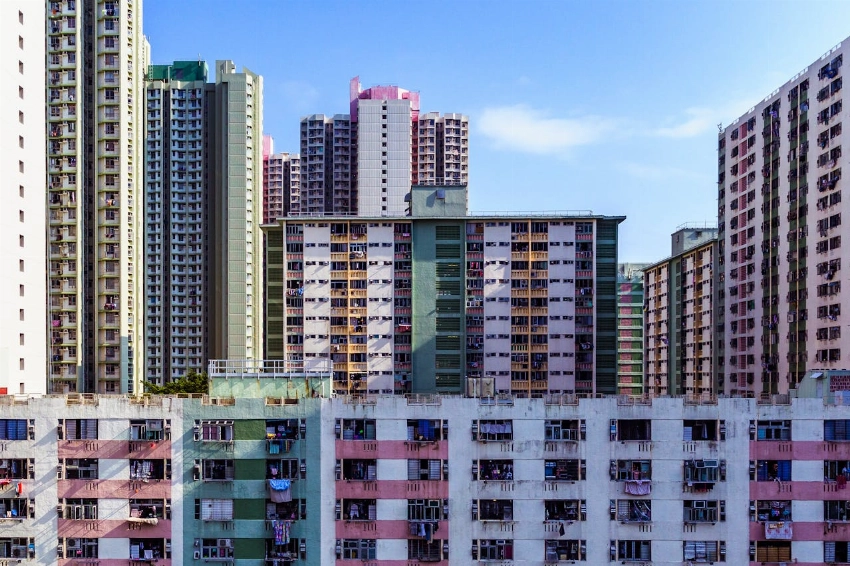
-
Conditions of Work: International students studying in Australia are allowed to work 48 hours a fortnight during study and anytime during the semester break with the possibility of earning AUD 599 per fortnight at a minimum rate of pay
-
Recent Wages: The minimum wage is set at AUD 24.95/hour (INR 1,414/hour) as of 2025, whereas popular student jobs are offered at the rate of AUD 25-45/hour based on the level of skills
-
High-Demand Job Categories: Tutoring (AUD 25-45/hour), major chain retail jobs, hospitality, and campus jobs allow the flexibility needed by the student
-
Tax Benefits: Students who earn less than AUD 18,200 do not need to pay tax, and a majority of student incomes fit in the bracket of 16 per cent tax (AUD 18,201-45,000)
-
Job Search Resources: Includes Indeed, Student Job Board and university career services - the current total for student employment is over 700 across Australia
-
Compliance Requirements: A Tax File Number must be obtained immediately on arrival, and the limit on work hours must be strictly followed to prevent cancellation of visa
Also Read: Level 1 Colleges in Australia: Guide to Top Colleges
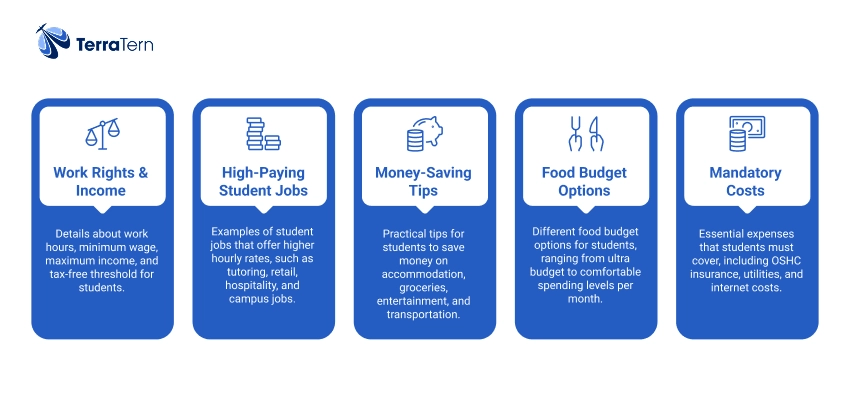
Currency Exchange and Money Management
-
The Rates: 1 AUD = 56.68 INR (August 2025), and a yearly range of fluctuations between 51.47 and 57.25 INR; therefore, the exact timing of transfers can save you money
-
Best Student Banking: Westpac, ANZ, Commonwealth Bank and NAB all have $0 monthly fee student bank accounts with international services - eligible to open 3 months before entry.
-
Smart Transfer Services: Smart transfer services like Wise (0.35-2% fees), Remitly, and XE Money offer higher rates in comparison to those of traditional banks, which will save AUD 50-150 per transfer, in contrast to bank wire transfers
-
Money Management Strategy: Aim to keep between 3-6 months of emergency fund, utilise middle-market exchange rates and do not accept airport currency exchanges, which are 5-10 per cent poorer rates
-
Transfer Optimisation: Compare rates per transfer and plan to use forward contracts for planned high volume transfers, and allow between AUD 20-50/month at the bank and transfer services.
-
Daily Banking Tip: Bank switching. Check the coverage of a bank in terms of ATMs, set automatic savings, and student banking packages to avoid monthly account fees.
Latest Facts & News Section
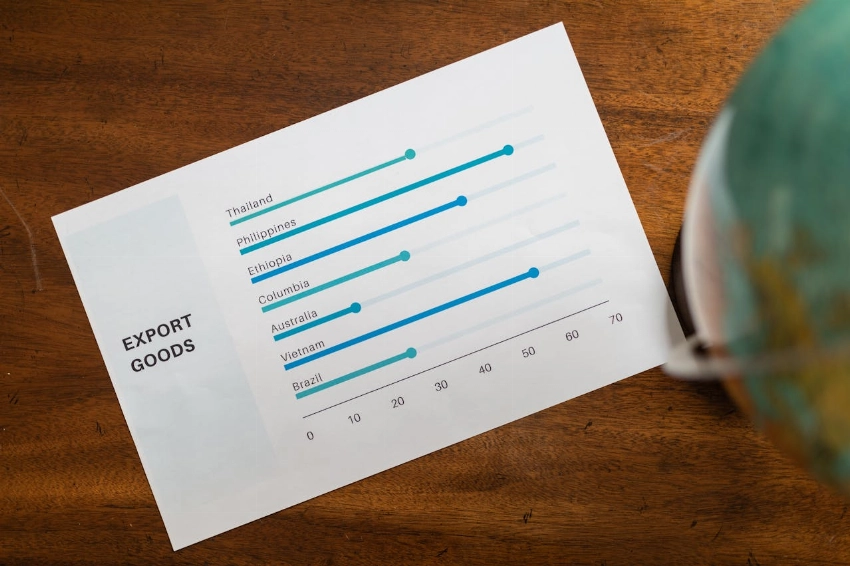
-
New OSHC Requirements 2025: Overseas Student Health Cover costs now range from AUD 500 to 4,000 annually
-
Minimum Wage Update: International students earn a minimum of AUD 21.38/hour with fortnightly earnings of $855.20
-
Government Cost Estimates: Official Study Australia calculator shows monthly expenses AUD 1,400-2,500
- City-wise Inflation Impact: Sydney remains the most expensive at AUD 1,900/month, Adelaide is the most affordable at AUD 1,300/month
-
Accommodation Shortage: On-campus housing is limited, driving 70% students to private rentals
-
Transport Pass Changes: Monthly public transport now AUD 100-160 across major cities
Also Read: Best Colleges in Sydney Australia: Latest Guide
Conclusion
Monthly living expenses in australia for international students will be AUD 1,400-2,500 (INR 79,352-1,41,700) and will vary broadly by city, with Adelaide being the least expensive at AUD 1,600-2,200/month and Sydney requiring AUD 2,500-3,850/month to live comfortably. The Australian Government requires evidence of AUD 29,710 per year to receive a student visa, which is based on realistic costs, where students spend the bulk of their budget on accommodation (48-65 per cent), then on food (15-25 per cent) and through compulsory OSHC insurance, around AUD 37-50 per month.
Contact TerraTern for more information on Monthly Living Expenses in Australia for International Students: complete 2025 guide.








